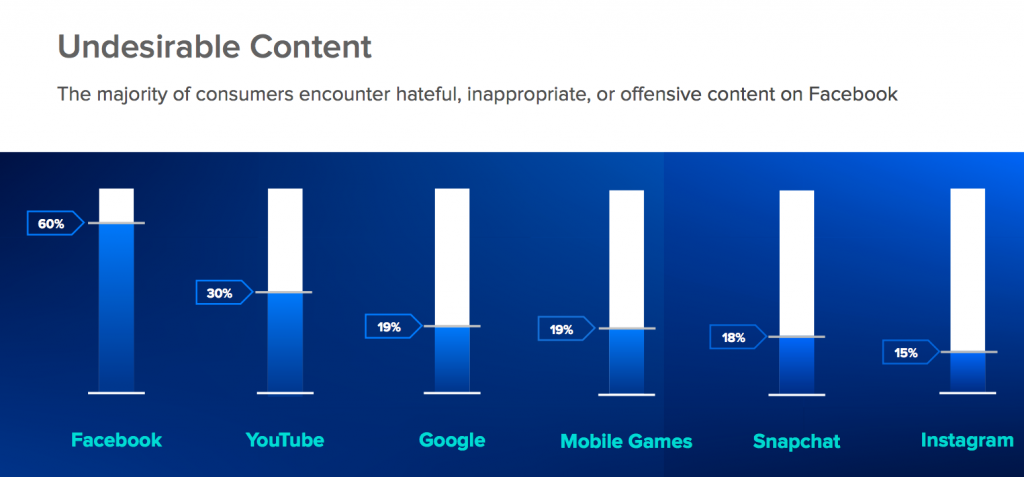Twice as many Facebook users report seeing hateful, inappropriate or offensive content than YouTube users, according to mobile ad tech company AdColony’s Brand Safety Survey released today. AdColony’s global survey of consumers found that 60 percent had encountered undesirable content on Facebook, compared to 30 percent on YouTube, and 19 percent on Google. Facebook’s photo sharing platform Instagram was the safest platform AdColony found data for, with 15 percent of users have come across undesirable content.

While YouTube and Facebook have both come under the spotlight for brand safety issues, YouTube has had the majority of negative press over the past few years in the regard, with most of Facebook’s scandals centring around data privacy and fake news. This data however suggests that Facebook still has a lot of work to do to create a more brand safe environment.
The survey also highlighted the potentially high cost for advertisers of buying inventory on platforms where problematic content appears. Fifty-two percent of respondents said that hateful, inappropriate or offensive content appearing next to an ad negatively impacts their perception of that brand (while oddly eight percent said it had a positive impact).
For platforms themselves, this undesirable content creates a negative perception for 62 percent of users, while actually creating a positive perception for 38 percent of users.
This data is interesting, as it shows, as might be expected, that controversial content can be good for a platform in some users eyes, presumably because some audiences seek out this sort of offensive material. However, it also suggests that this positive perception rarely spreads to brands advertising on those platforms.
Of all the platforms listed, Facebook was also found to have the biggest problem with fake news. Of those surveyed, 47 percent said they had come across fake news on Facebook, compared to 26 percent for YouTube and 21 percent for Google. On this front though Facebook has been very active recently, launching a number of efforts designed to fight fake news such as more severe vetting of potentially malicious content, and more clear labelling of paid-for political posts.
As such Facebook may expect to see the proportion of fake news appearing on the platform fall in the near future, with this year’s midterm elections in the US being a particularly big test of whether the company’s efforts have been fruitful.
AdColony’s survey also examined where on mobile consumers least mind seeing ads. The results found mobile games to relatively popular, with 19 percent listing it as their preferred platform for seeing ads, above YouTube at 15 percent and Snapchat at 9 percent. Respondents also appeared to be relatively receptive to ads on mobile games, with 29 percent saying they are likely to buy items advertised on mobile games, compared to 17 percent for YouTube and ten percent for Instagram.




